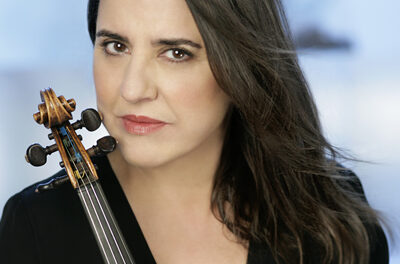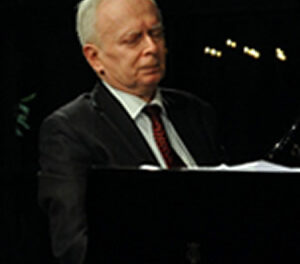Cage and Beethoven on the same concert? Having pondered this question and even queried my friends through social networks, I was still stumped. Dr. Randolph Foy, music director and conductor of the Raleigh Civic Symphony, crafted a unique program for “Random Acts of Cage, Part II,” for the John Cage Centennial. And yes, there was meaning behind his unusual but artistic decisions, meaning that did not become clear until the end of the concert, which included works by Cage and friends. The festive program took place in Stewart Theatre on the campus of North Carolina State University.
Erik Satie, (1866-1925) French composer and “sponsor” of Les Six, inspired a line of important 20th-century composers, including John Cage. Satie’s music score to the ballet Parade (1917) was solicited by Jean Cocteau, the sets were designed by Pablo Picasso, and Leonide Massine choreographed and danced in the production. Foy remarked that Cage was very likely attracted to the unusual sounds that included a siren, a gunshot, a typewriter, the amplification of a puddle of water, and an assortment of other unusual percussion sounds. It’s a pastiche, if you will, of art music from the romantic period. But there is a seriousness of the music inspired by Cubism and popular song. And Cage must have heard this as well.
And so the orchestra began the concert with one of the most interesting if not influential pieces that commenced a century-long thread of music considered avant-garde. It opens with “Chorale,” the first of eight unusually-titled sections. The brasses’ entrance was confident and bold. The strings, very ably led by Lindy Wang, were strong, in tune, and responsive, the woodwinds were warm and beautiful, and the percussionists played with great conviction and flair. It was great fun to hear and a very good start.
Following that thread to the middle of the 20th century, the orchestra performed parts of John Cage’s first orchestral work, The Seasons (1947). Commissioned for The Ballet Society and choreographed by Merce Cunningham, it was premiered at the Ziegfeld Theater in New York on May 18, 1947. His work is like a series of beautiful paintings using the lush colors of each section of the orchestra. It is so unlike many of his later pieces that one might not recognize it as Cage. And that’s the point. As one of the most creative thinkers of the 20th-century, Cage penned an enormous catalog of work. The ensemble’s reading was very sensitive. I was impressed.
There were three more compositions by Cage on the second half: Living Room Music (1940), a delightful theatre piece wonderfully performed by Vincent Waters, Eric Grundstrom, Taylor Threatt and Eric Burns; a splendid presentation of Apartment House 1776 (1976); and 4’33” – the infamous piece first performed by David Tudor at the Maverick Concert Hall in Woodstock, New York in 1952.
And now, the answer to our musical quiz, posed at the outset: During a lecture at Black Mountain College in 1948, John Cage rattled many of the progressive faculty members with his less-than-complementary remarks about Beethoven. Fidelio seemed like such an unlikely pairing. Foy, the ever-creative music director, had a plan: elongating – or, rather, replacing – Beethoven’s written fermatas with the tacet (silent) sections of 4’33” and thus “address[ing] the harmonic tension in a very Cage-ian way – [resulting in] the simultaneous performance of the two works.” (R. Foy). So there you have it. The orchestra played exceptionally well, and it was the perfect finale.
The orchestra also played On Time and the Instrumental Factor (1969) by Morton Feldman (1926-87), one of Cage’s friends and colleagues. And though the two composers shared compatible views on music and composition, Feldman’s delicate sounding pieces are identifiably unique. It was a fine performance for an unforgettable afternoon.
Part III of the Cage celebration, Random Acts of Cage, will feature The Raleigh Civic Chamber Orchestra in Stewart Theatre on April 22 at 4 p.m. For details, see our calendar.












